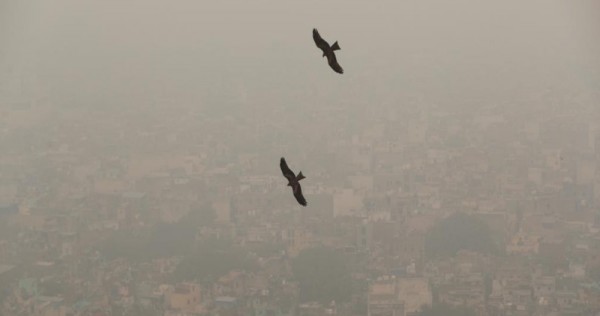NEW DELHI/LONDON – Toxic air in India and other South Asian countries could be causing large numbers of miscarriages and stillbirths, scientists said on Thursday (Jan 7).
A study in The Lancet medical journal estimated nearly 350,000 pregnancy losses a year in South Asia were linked to high pollution levels, accounting for 7 per cent of annual pregnancy loss in the region between 2000 and 2016.
South Asia has the highest rate of pregnancy loss globally and some of the worst air pollution in the world.
“Our findings… (provide) further justification for urgent action to tackle dangerous levels of pollution,” lead author Tao Xue of Peking University said in a statement.
The study follows a Lancet report last month which linked India’s bad air quality to 1.67 million deaths or 18 per cent of all its deaths in 2019, up from 1.24 million deaths in 2017.
The analysis found pollution led to chronic obstructive pulmonary disease, respiratory infections, lung cancer, heart disease, stroke, diabetes, neonatal disorders and cataracts.
In Thursday’s study, the Chinese research team looked at data for 34,197 mothers in South Asia, who had had at least one miscarriage or stillbirth and one or more live births.
More than three-quarters of the women were from India with the rest split between Pakistan and Bangladesh.
The scientists estimated the mothers’ exposure during pregnancy to concentrations of PM2.5 – tiny particles found in dust, soot and smoke that can lodge in the lungs and enter the bloodstream.
They calculated that 7.1 per cent of annual pregnancy losses were attributable to pollution above India’s air quality standard of 40 microgrammes per cubic metre, and 29·7 per cent to pollution above the World Health Organisation guideline of 10 microgrammes per cubic metre.
Co-author Tianjia Guan of the Chinese Academy of Medical Sciences said pregnancy loss had mental, physical and economic impacts on women and that reducing miscarriages and stillbirths may lead to knock-on improvements in gender equality.
India’s cities top global pollution lists with New Delhi, the world’s most polluted capital.
Factors contributing to the country’s filthy air include industry, vehicle exhaust fumes, coal-fired power plants, building site dust and the burning of crop residue.
This article was first published in Asia One . All contents and images are copyright to their respective owners and sources.











